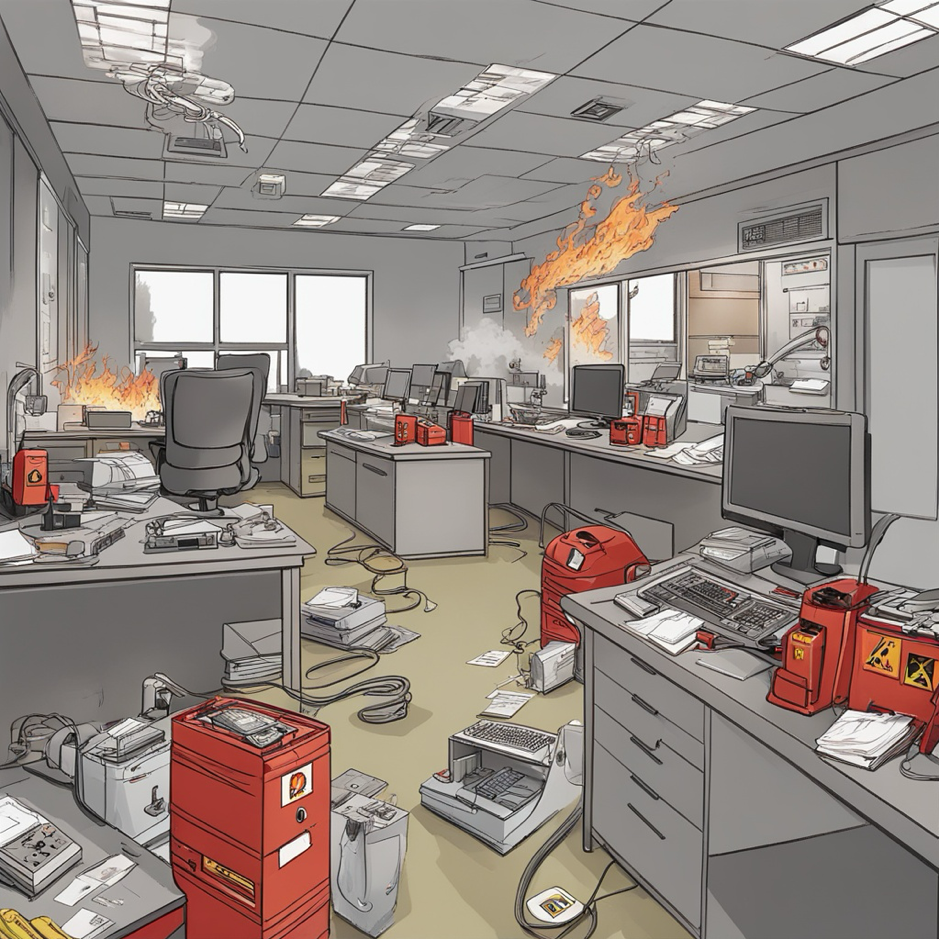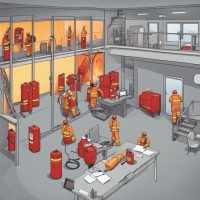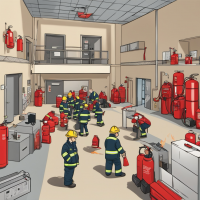
Commercial properties, which include office buildings, retail spaces, warehouses, restaurants, and industrial facilities, are especially vulnerable to fire hazards due to the complexity of their operations, high occupancy levels, and diverse range of equipment and materials. Recognizing and addressing fire hazards in such environments is crucial not only for ensuring the safety of occupants and property but also for maintaining legal compliance and business continuity.
This article explores the various types of fire hazards commonly found in commercial settings, how to identify them effectively, and best practices for fire prevention and mitigation.
The Importance of Fire Hazard Identification
Understanding fire hazards is the first and most critical step in any fire safety strategy. In a commercial environment, the risks are amplified due to factors such as:
- High foot traffic and varying occupancy
- Presence of combustible materials and electrical systems
- Machinery and equipment operating for extended hours
- Varied levels of fire safety awareness among employees
A proactive approach to fire hazard identification not only saves lives but also minimizes potential financial loss, damage to reputation, and downtime in operations.
Common Types of Fire Hazards in Commercial Properties
Fire hazards can be broadly classified into several categories. Recognizing these can help safety officers and property managers take appropriate preventive actions.
- Electrical Hazards
Electrical faults are one of the leading causes of commercial fires. Common issues include:- Overloaded circuits and power strips
- Faulty or aging wiring
- Poorly maintained electrical equipment
- Improper use of extension cords
- Lack of surge protection
How to Identify: Conduct routine inspections, check for exposed or frayed wires, ensure circuit breakers are functioning properly, and review the energy load on outlets.
- Combustible Materials
Many commercial properties store or use combustible materials, such as:- Paper products and cardboard
- Cleaning chemicals and aerosols
- Paints, solvents, and flammable liquids
- Fabric and foam-based furnishings
How to Identify: Review storage areas, especially supply closets, warehouses, and maintenance rooms. Pay attention to materials stored near heat sources or in confined, poorly ventilated spaces.
- Heating and Cooking Equipment
Restaurants, break rooms, and industrial facilities often use high-heat equipment, including:- Ovens, stoves, and fryers
- Space heaters
- Industrial boilers and kilns
How to Identify: Inspect for grease build-up, ensure proper ventilation, check that appliances are clean and regularly maintained, and verify that staff follow operational safety guidelines.
- Poor Housekeeping Practices
Clutter and disorganization contribute significantly to fire risk. Examples include:- Blocked exits and fire escapes
- Accumulation of dust, debris, or trash
- Poor storage of flammable materials
- Overflowing waste bins
How to Identify: Conduct regular walkthroughs of all spaces, including less frequented areas like basements or attics. Look for clutter near heat sources or electrical equipment.
- Defective Fire Safety Equipment
Fire safety systems are only effective if they work properly. Issues may include:- Broken smoke detectors or alarms
- Empty or missing fire extinguishers
- Malfunctioning sprinkler systems
- Outdated fire suppression equipment
How to Identify: Schedule routine maintenance and inspection of all fire protection systems. Keep detailed records and ensure compliance with fire codes.
- Human Error and Unsafe Practices
Human behavior is often a key factor in fire incidents. Examples include:- Smoking in prohibited areas
- Leaving heat-producing devices unattended
- Improper disposal of flammable waste
- Ignoring fire safety procedures
How to Identify: Monitor workplace behaviors, conduct safety training sessions, and establish clear rules and consequences regarding fire safety.
Methods for Identifying Fire Hazards
A systematic approach ensures that no hazard goes unnoticed. Here are some effective methods:
- Regular Fire Risk Assessments
Schedule comprehensive fire risk assessments at least once a year or after significant changes in occupancy or building layout. These assessments should identify hazards, evaluate risks, and recommend corrective actions. - Checklists and Safety Audits
Use fire hazard checklists tailored to your specific industry or property type. Conduct safety audits on a regular basis, either internally or with the help of fire safety professionals. - Employee Involvement
Train employees to spot and report potential fire hazards. Create a culture where safety is everyone’s responsibility and encourage staff to participate in fire drills and safety briefings. - Monitoring High-Risk Areas
Pay special attention to areas known to be fire-prone, such as kitchens, mechanical rooms, server rooms, and storage areas. Install surveillance or automated monitoring systems where necessary.
Best Practices for Mitigating Fire Hazards
Once hazards are identified, swift and effective mitigation is essential. Here are some best practices:
- Maintain Electrical Systems: Hire licensed electricians for all electrical work and regularly inspect systems for wear and compliance.
- Implement Safe Storage: Store flammable materials in appropriate containers, away from ignition sources, and in well-ventilated areas.
- Improve Housekeeping: Enforce regular cleaning routines and keep escape routes and equipment accessible at all times.
- Ensure Equipment Safety: Keep heating and cooking appliances clean and well-maintained. Install automatic shut-offs where possible.
- Update Fire Safety Equipment: Replace expired fire extinguishers, test alarms monthly, and inspect sprinkler systems regularly.
- Conduct Training: Provide fire safety education for all staff, including how to use extinguishers, evacuate, and report hazards.
Legal and Insurance Implications
Failing to identify and mitigate fire hazards can result in serious legal and financial consequences. These include:
- Violation of fire safety regulations, leading to fines or forced closure
- Denial of insurance claims if negligence is proven
- Lawsuits for injury or wrongful death
- Loss of business licenses in extreme cases
Staying proactive not only avoids penalties but also demonstrates a commitment to workplace safety.
Conclusion
Identifying fire hazards in commercial properties is an essential responsibility for business owners, property managers, and safety professionals. While fire risks can never be eliminated entirely, a vigilant and informed approach significantly reduces their likelihood and impact. Through routine assessments, employee involvement, adherence to safety protocols, and investment in modern fire protection systems, commercial properties can create a safer environment for all occupants and safeguard their operations against the devastating effects of fire.





Leave A Comment